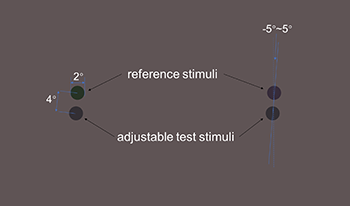
Three-dimensional (3D) displays employ the technique of binocular disparity, by presenting two separate images with parallax cues to the two eyes, resulting in the perception of stereo vision. The human brain can fuse these two images into a single stereoscopic image, provided that their color difference falls within the fusion limit. Prior research on binocular color fusion has mostly concentrated on assessing the fusion limit across different conditions, but limited attention has been given to investigating binocular color mixture, particularly concerning opposite color pairs. In order to explore the impact of background luminance on the binocular mixture of opposite colors, a series of color matching experiments were conducted for three background luminance levels using a custom-built stereoscopic display. The findings reveal that as the contrast of the background luminance decreases, the binocular color mixture is more affected by the sensory dominant eye.
Dingyu Hu, Shining Ma, Yue Liu, Yongtian Wang, Weitao Song, "Perceived Color of Binocular Hue Mixture under Different Background Luminance Levels" in Color and Imaging Conference, 2023, pp 1 - 6, https://doi.org/10.2352/CIC.2023.31.1.2
 Find this author on Google Scholar
Find this author on Google Scholar Find this author on PubMed
Find this author on PubMed